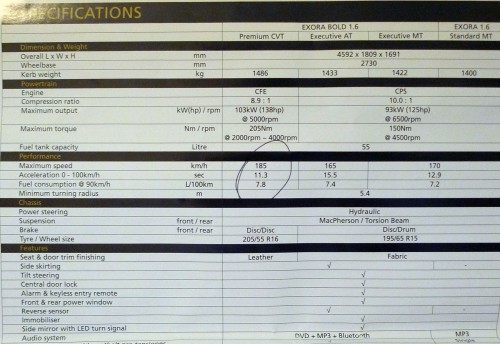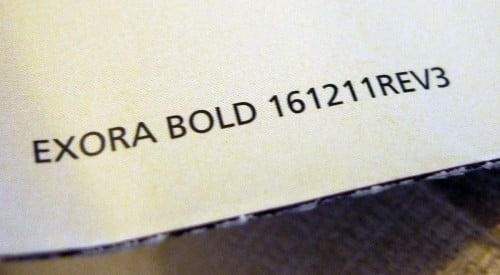Here’s an update. Remember when we posted up scans of the Proton Exora Bold brochure shortly before Proton made an official announcement? We now have a hard copy of the finalised brochure with us, and it appears to have slightly different figures from the scans. We will take you through the changes.
The scans had a code at the bottom of the page “091211REV0” and the new one has the code “161211REV3”. The numbers look like the date of approval or print (9-12-2011, as opposed to 16-12-2011), so it’s clear that the one we have now is the newer version. The “REV” could be for revision, and three comes after zero, falling nicely into the scenario.
So where is the difference? The ones that really jump out at first glance are the 0-100 km/h acceleration figures. In the old scan, the Premium CVT (Campro CFE) does 0-100 in 13.3 seconds, the Executive AT (Campro CPS) does it in 15.7 seconds and the manual variants stop the clock at 13.1 sec.
In the new brochure, as you can see here, the turbocharged Bold is timed at 11.3 seconds, two full seconds faster. The CPS + 4AT variant does 15.5 sec and the CPS + 5MT does 12.9 sec. All times are faster, and 11.3 sec for the 1,486 kg CFE sounds more encouraging.
Other changes include the deletion of the Bore X Stroke row across the board (76 X 86 for CFE) and the correct compression ratio for the CFE, which is 8.9:1, not 10.0:1 as per the CPS. Fuel tank capacity has been revised from 60 litres to 55 litres. Top speed and “Fuel Consumption @ 90 km/h” data remain intact.
We have driven the Exora Bold, so expect the test drive report very soon!
AD: Drive the Proton model of your dreams. Submit your details and Proton PJ will get in touch with you.
Looking to sell your car? Sell it with Carro.













AI-generated Summary ✨
Comments generally express interest and positive impressions of the Exora Bold, especially after a night drive testing its performance and lighting. Some comments discuss fuel efficiency, with mixed opinions—some believing the CFE engine should offer better FC, while others suggest real-world consumption is higher. There are comparisons between the CFE and CPS engines, debates about fuel consumption figures, and discussions about turbo technology, engine efficiency, and design choices like shorter strokes and intercoolers. A few comments express skepticism about Proton's advertised data and branding, emphasizing the importance of real-world testing. Overall, most comments are supportive, showing curiosity about the new model, with some constructive critiques on design and efficiency details.